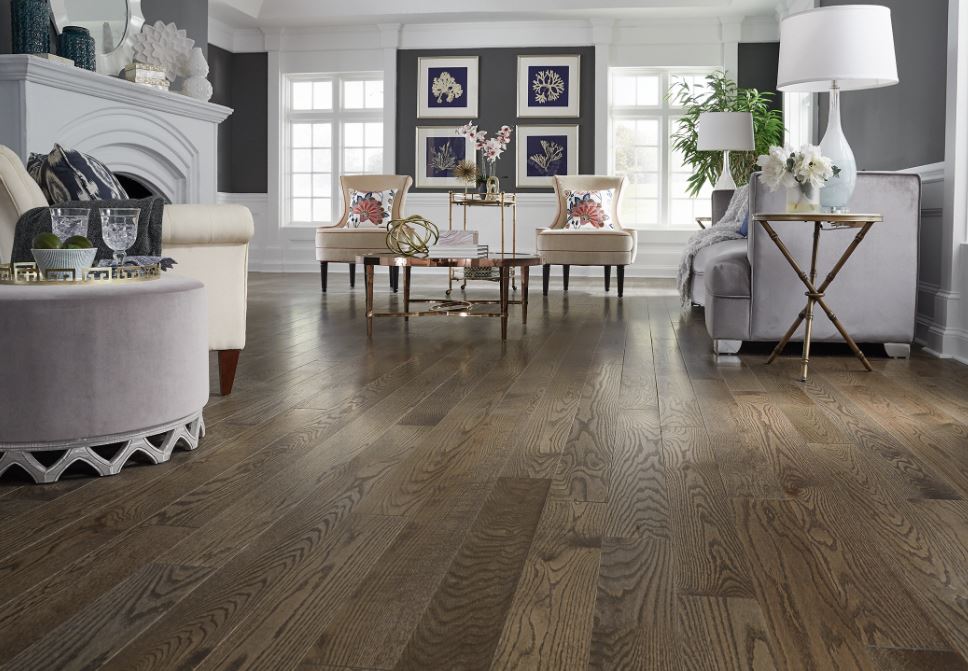You may prefer to remove the vinyl floor if layering and height are factors for the new floor. Removing old bonded vinyl flooring has its pitfalls. The project may take longer if you remove the vinyl flooring adhesive, which tends to be stubborn, and why a heat gun or chemicals can help.
Liquid chemical adhesive removers like Klein-Strip can help with vinyl floor removal, but they come with their own set of problems, such as strong odors, messes, and safety concerns. Plus, liquid removers often don’t work as promised. The chemical-free dry method described here requires patience and determination, coupled with the right tools and an understanding of how vinyl flooring is installed.
A heat gun is an invaluable tool to have in your arsenal when removing vinyl flooring, but it can be dangerous. If you hold the heat gun too close to flammable materials, it may catch fire. Be very careful to keep the heat gun well away from the work materials and wear gloves.
Don’t expect to remove vinyl flooring without damaging it unless it was loosely installed in the middle. You can also remove vinyl planks with minimal damage if they were established as a floating floor. Likely, you will not be able to reuse any part of the removed vinyl flooring under any other circumstances.
Remove the quarter molding
If a quarter-circle molding was installed in front of the baseboards as a way to cover the gap between the baseboards and the floor, it must be removed before you can begin the vinyl flooring. Gently pry the quarter with the flat end of a pry bar.
Remove the motherboard trim
In some cases, vinyl flooring can be installed right up to the edge of the skirting boards under the quarter-circle molding. However, it is more common for skirting boards to be installed over the top of the floor. If this is the case in your home, you will need to altogether remove the baseboards to remove the old floor.
To start, place a block of wood against the wall a few inches above the baseboard. Place the flat end of the pry bar where the trim meets the wall. A quick tap with a gloved hand should be enough to push the rod under the trim. If not, tap the crowbar with a rubber mallet or hammer.
Skirting boards are often damaged when removing paneling. Unless you are removing high-quality, expensive baseboards, you may want to calculate the cost of new baseboards versus the labor of salvaging and repairing old baseboards.
Try removing the middle part of the floor
You will often find that the vinyl flooring has been installed all the way around, making the removal process much faster. In other words, only the 6-inch circumference was glued or stapled; the center of the vinyl floor is free.
To check to see if this is the case in your room, cut the floor around the perimeter of the room, about 8 inches from the walls. Keep the cut parallel to the walls and see if the center of the floor pulls out easily. Removing vinyl flooring from concrete can be more difficult than removing it from wood. The floor is probably stuck to the concrete, so you’ll need to scrape it off or use chemicals.
Cut the floor into strips
It’s a good idea always to have your knife handy when removing vinyl flooring. When removing pieces of flooring, you can cut them into long, narrow strips, keeping them no more than 18 inches wide. Cut off the length only when it’s not working and it’s getting in the way. Keeping the strips narrow will benefit you later when you dispose of the old floor.
It can be tempting to start pulling or rolling large sheets of vinyl flooring all at once. However, this is not recommended as vinyl can be heavy and difficult to handle. There is no reason to keep vinyl in large sheets unless you plan to give it to a friend or reuse it in another part of the house.
Whether it’s the entire floor or just the perimeter, bonded vinyl flooring is best removed with a tough, hard scraper. Start by doing as much prying as you can with the tip of a flat pry bar, and chisel under the vinyl to separate it from the backing. Because the pry bar is blunt, it will only work if the vinyl lightly adheres.




